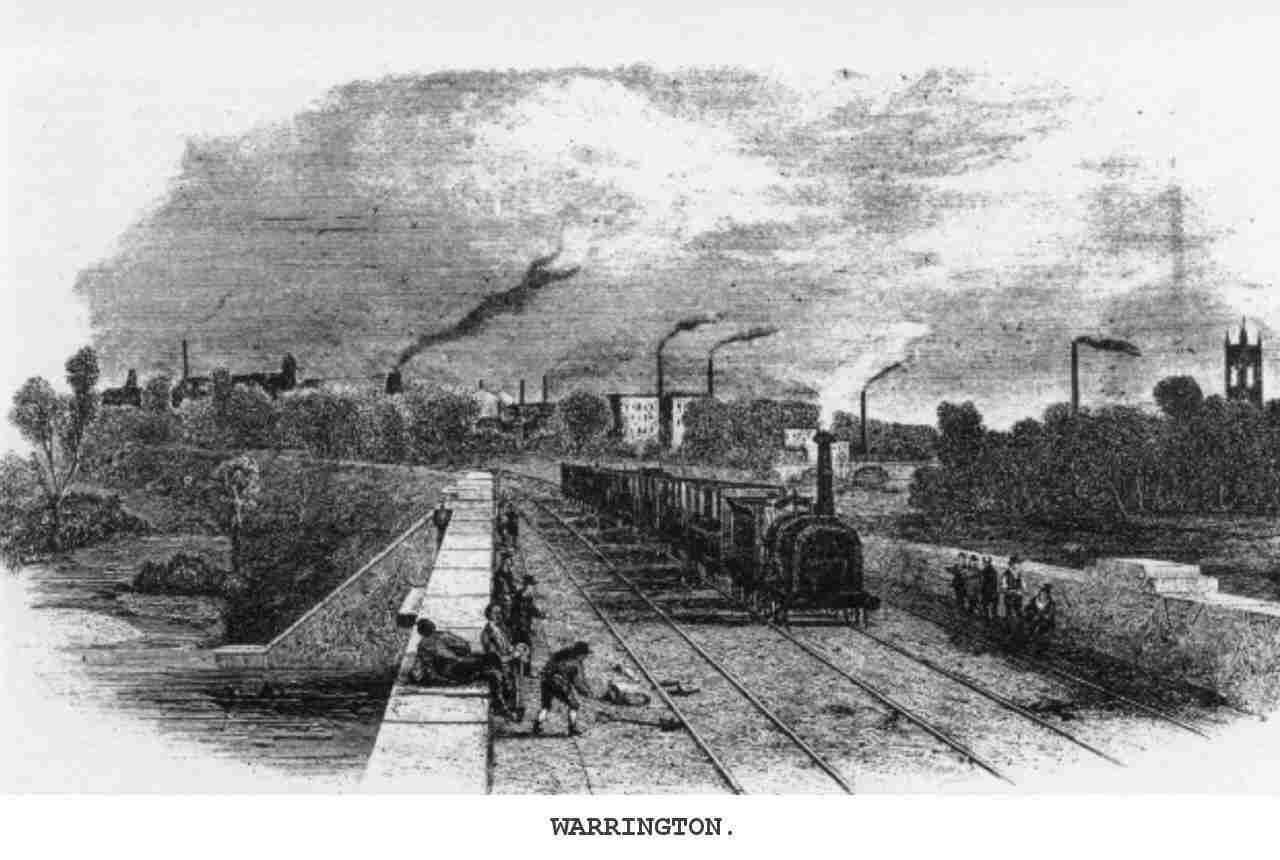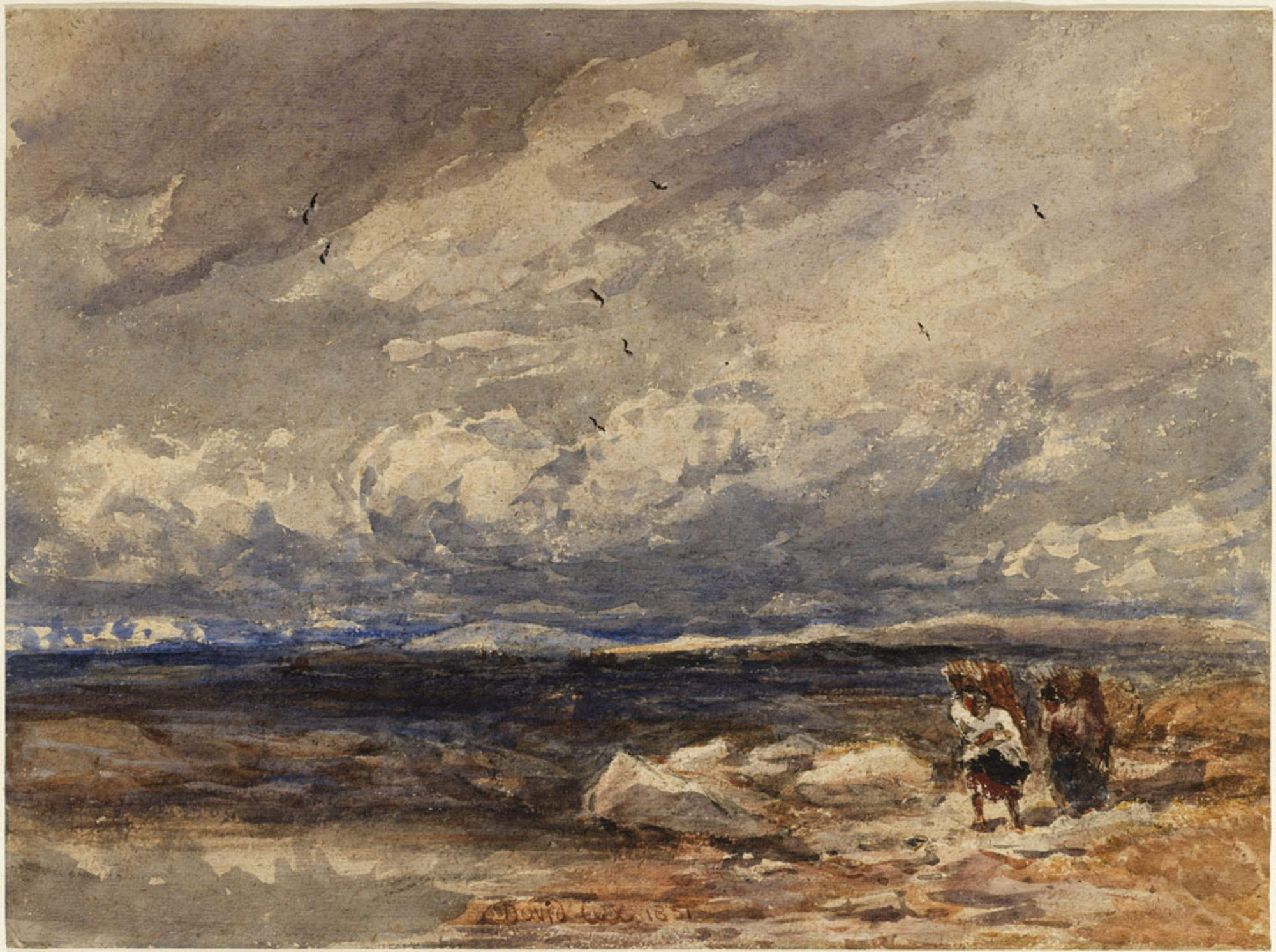|
Davyhulme Sewage Works
Davyhulme Sewage Works is the main waste water treatment works for the city of Manchester, England, and one of the largest in Europe. It was opened in 1894, and has pioneered the improvement of treatment processes. With the growth of population in the late nineteenth century, and the proliferation of water closets, the rivers around Manchester were becoming grossly polluted, and the City of Manchester decided to build two deep level sewers to intercept existing sewers. When the first one reached Davyhulme, further extension was blocked by the Manchester Ship Canal, and so a treatment works was built there. The works used precipitation tanks, and a gauge tramway was built, to facilitate the movement of materials around the site. The first steam locomotive was acquired in 1897, and a further fourteen steam and two diesel locomotives operated on the system before its closure in 1958. Treated sludge was loaded into ships and discharged into the Mersey estuary from 1898. Over the next ... [...More Info...] [...Related Items...] OR: [Wikipedia] [Google] [Baidu] |
Davyhulme
Davyhulme () is an area of Trafford, Greater Manchester, England, Historic counties of England, historically in Lancashire. The population at the United Kingdom Census 2011, 2011 census was 19,634. Davyhulme Sewage Works The area is notable for Davyhulme Sewage Works, one of the largest wastewater treatment plants in Europe. Opened in 1894, the site is operated by United Utilities and serves a population of 1.2 million in and around the city of Manchester. The facility includes a biogas combined heat and power facility, producing renewable energy from gas produced by the anaerobic digestion of sewage. Parks Davyhulme Millennium Nature Reserve is a green area set along the Manchester Ship Canal, formerly part of the waterworks site. It is popular with dog-walkers, and children on bicycles. The area is owned by United Utilities. Davyhulme Park is a Green Flag Award, green flag awarded park in the area. It contains two large wildlife ponds, two bowling greens, tennis courts, chi ... [...More Info...] [...Related Items...] OR: [Wikipedia] [Google] [Baidu] |
38 & 39 Vict
38 may refer to: *38 (number) *38 BC *AD 38 *1938 *2038 Science * Strontium, an alkaline earth metal in the periodic table * 38 Leda, an asteroid in the asteroid belt Other uses *.38, a caliber of firearms and cartridges **.38 Special, a revolver cartridge *''Thirty-Eight: The Hurricane That Transformed New England'', a 2016 book by Stephen Long *"Thirty Eight", a song by Karma to Burn from the album ''Almost Heathen'', 2001 {{Numberdis ... [...More Info...] [...Related Items...] OR: [Wikipedia] [Google] [Baidu] |
Aerobic Organism
An aerobic organism or aerobe is an organism that can survive and grow in an oxygenated environment. The ability to exhibit aerobic respiration may yield benefits to the aerobic organism, as aerobic respiration yields more energy than anaerobic respiration. Energy production of the cell involves the synthesis of ATP by an enzyme called ATP synthase. In aerobic respiration, ATP synthase is coupled with an electron transport chain in which oxygen acts as a terminal electron acceptor. In July 2020, marine biologists reported that aerobic microorganisms (mainly), in " quasi-suspended animation", were found in organically poor sediments, up to 101.5 million years old, 250 feet below the seafloor in the South Pacific Gyre (SPG) ("the deadest spot in the ocean"), and could be the longest-living life forms ever found. Types * Obligate aerobes need oxygen to grow. In a process known as cellular respiration, these organisms use oxygen to oxidize substrates (for example sugars and ... [...More Info...] [...Related Items...] OR: [Wikipedia] [Google] [Baidu] |
Anaerobic Organism
An anaerobic organism or anaerobe is any organism that does not require oxygen, molecular oxygen for growth. It may react negatively or even die if free oxygen is present. In contrast, an aerobic organism (aerobe) is an organism that requires an oxygenated environment. Anaerobes may be unicellular (e.g. protozoans, bacteria) or multicellular. Most fungi are obligate aerobes, requiring oxygen to survive. However, some species, such as the Chytridiomycota that reside in the rumen of cattle, are obligate anaerobes; for these species, anaerobic respiration is used because oxygen will disrupt their metabolism or kill them. The sea floor is possibly one of the largest accumulation of anaerobic organisms on Earth, where microbes are primarily concentrated around Hydrothermal_vent, hydrothermal vents. These microbes produce energy in absence of sunlight or oxygen through a process called chemosynthesis, whereby inorganic compounds such as hydrogen gas, hydrogen sulfide or ferrous ions are ... [...More Info...] [...Related Items...] OR: [Wikipedia] [Google] [Baidu] |
Barrow In Furness
Barrow-in-Furness is a port town and civil parish (as just "Barrow") in the Westmorland and Furness district of Cumbria, England. Historic counties of England, Historically in the county of Lancashire, it was incorporated as a municipal borough in 1867 and merged with Dalton-in-Furness Urban District in 1974 to form the Borough of Barrow-in-Furness. The borough subsequently merged with adjoining boroughs in 2023 to form the Westmorland and Furness unitary authority. At the tip of the Furness, Furness peninsula, close to the Lake District, it is bordered by Morecambe Bay, the Duddon Estuary and the Irish Sea. In 2021, Barrow's population was 55,489, making it the second largest urban area in Cumbria after Carlisle, Cumbria, Carlisle, and the largest in the Westmorland and Furness unitary authority. Natives of Barrow, as well as the local dialect, are known as Barrovian. In the Middle Ages, Barrow was a small hamlet (place), hamlet within the parish of Dalton-in-Furness with Fu ... [...More Info...] [...Related Items...] OR: [Wikipedia] [Google] [Baidu] |
Joseph Thompson 1898
Joseph is a common male name, derived from the Hebrew (). "Joseph" is used, along with " Josef", mostly in English, French and partially German languages. This spelling is also found as a variant in the languages of the modern-day Nordic countries. In Portuguese and Spanish, the name is "José". In Arabic, including in the Quran, the name is spelled , . In Kurdish (''Kurdî''), the name is , Persian, the name is , and in Turkish it is . In Pashto the name is spelled ''Esaf'' (ايسپ) and in Malayalam it is spelled ''Ousep'' (ഔസേപ്പ്). In Tamil, it is spelled as ''Yosepu'' (யோசேப்பு). The name has enjoyed significant popularity in its many forms in numerous countries, and ''Joseph'' was one of the two names, along with ''Robert'', to have remained in the top 10 boys' names list in the US from 1925 to 1972. It is especially common in contemporary Israel, as either "Yossi" or "Yossef", and in Italy, where the name "Giuseppe" was the most common m ... [...More Info...] [...Related Items...] OR: [Wikipedia] [Google] [Baidu] |
Septic Tank
A septic tank is an underground chamber made of concrete, fiberglass, or plastic through which domestic wastewater (sewage) flows for basic sewage treatment. Settling and anaerobic digestion processes reduce solids and organics, but the treatment efficiency is only moderate (referred to as "primary treatment"). Septic tank systems are a type of simple onsite sewage facility. They can be used in areas that are not connected to a sewerage system, such as rural areas. The treated liquid effluent is commonly disposed in a septic drain field, which provides further treatment. Nonetheless, groundwater pollution may occur and is a problem. The term "septic" refers to the Anaerobic digestion, anaerobic bacterial environment that develops in the tank that decomposes or mineralizes the waste discharged into the tank. Septic tanks can be coupled with other Onsite sewage facility, onsite wastewater treatment units such as biofilters or aerobic systems involving artificially forced aeration. T ... [...More Info...] [...Related Items...] OR: [Wikipedia] [Google] [Baidu] |
Warrington
Warrington () is an industrial town in the Borough of Warrington, borough of the same name in Cheshire, England. The town sits on the banks of the River Mersey and was Historic counties of England, historically part of Lancashire. It is east of Liverpool and the same distance west of Manchester. The population in 2021 was recorded as 174,970 for the built-up area and 210,900 for the wider borough, the latter being more than double that of 1968 when it became a New towns in the United Kingdom, new town. Warrington is the largest town in the ceremonial county of Cheshire. Warrington was founded by the Roman Britain, Romans at an important crossing place on the River Mersey. A new settlement was established by the Saxons, Saxon Wærings. By the Middle Ages, Warrington had emerged as a market town at the lowest bridging point of the river. A local tradition of textile and tool production dates from this time. The expansion and urbanisation of Warrington coincided with the Industr ... [...More Info...] [...Related Items...] OR: [Wikipedia] [Google] [Baidu] |
River Mersey
The River Mersey () is a major river in North West England. Its name derives from Old English and means "boundary river", possibly referring to its having been a border between the ancient kingdoms of Mercia and Northumbria. For centuries it has formed part of the boundary between the historic counties of Lancashire and Cheshire. The Mersey starts at the confluence of the River Tame and River Goyt in Stockport. It flows westwards through south Manchester, then into the Manchester Ship Canal near Irlam Locks, becoming a part of the canal and maintaining its water levels. After it exits the canal, flowing towards Warrington where it widens. It then narrows as it passes between Runcorn and Widnes. The river widens into a large estuary, which is across at its widest point near Ellesmere Port. The course of the river then turns northwards as the estuary narrows between Liverpool and Birkenhead on the Wirral Peninsula to the west, and empties into Liverpool Bay. In total the ... [...More Info...] [...Related Items...] OR: [Wikipedia] [Google] [Baidu] |
Carrington Moss
Carrington Moss is a large area of bog, peat bog near Carrington, Greater Manchester, Carrington, Greater Manchester, England, south of the River Mersey, south-west of Manchester. It occupies an area of about . The depth of peat varies between . Originally an unused area of grouse moorland, the moss was Land reclamation, reclaimed in the latter half of the 19th century for farming and the disposal of Manchester's waste. A system of tramways was built to connect it with the Manchester Ship Canal and a nearby railway line. In the Second World War, the land was used as a Starfish site and in the latter half of the 20th century a large industrial complex was built along its northern edge. More recently, several sporting facilities have been built on Carrington Moss. The land is still used for farming and several nature reserves have been established within its bounds. Parts of Carrington Moss are accessible to the public over several Rights of way in England and Wales, rights ... [...More Info...] [...Related Items...] OR: [Wikipedia] [Google] [Baidu] |
River Irwell
The River Irwell ( ) is a tributary of the River Mersey in north-west England. It rises at Irwell Springs on Deerplay Moor, approximately north of Bacup and flows southwards for to meet the Mersey near Irlam Locks. The Irwell marks the boundary between Manchester and Salford, Greater Manchester, Salford, and its lower reaches have been canalised and now form part of the Manchester Ship Canal. In the 17th and 18th centuries, the Irwell's lower reaches were a trading route that became part of the Mersey and Irwell Navigation. In the 19th century, the river's course downstream of Manchester was permanently altered by the construction of the Manchester Ship Canal which opened in 1896. The canal turned Manchester and Salford into a major inland seaport and led to the development of Trafford Park, which became the largest industrial estate in Europe. Further changes were made in the 20th and 21st centuries to prevent flooding in Manchester and Salford, including the construction of ... [...More Info...] [...Related Items...] OR: [Wikipedia] [Google] [Baidu] |







